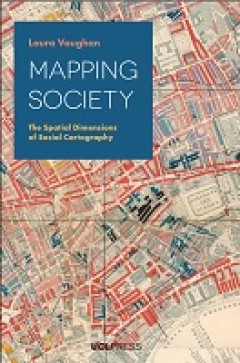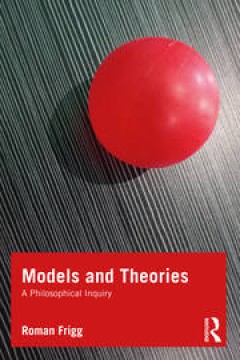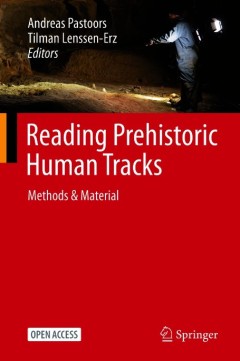Filter by

Computational Physiology : Simula Summer School 2021 − Student Reports
This open access volume compiles student reports from the 2021 Simula Summer School in Computational Physiology. Interested readers will find herein a number of modern approaches to modeling excitable tissue. This should provide a framework for tools available to model subcellular and tissue-level physiology across scales and scientific questions. In June through August of 2021, Simula held th…
- Edition
- -
- ISBN/ISSN
- 9783031051647
- Collation
- xi, 109 p.
- Series Title
- -
- Call Number
- 571.0285 COM K

Continental Philosophy of Technoscience
The key objective of this volume is to allow philosophy students and early-stage researchers to become practicing philosophers in technoscientific settings. Zwart focuses on the methodological issue of how to practice continental philosophy of technoscience today. This text draws upon continental authors such as Hegel, Engels, Heidegger, Bachelard and Lacan (and their fields of dialectics, p…
- Edition
- -
- ISBN/ISSN
- 9783030845704
- Collation
- vii, 245 p.
- Series Title
- -
- Call Number
- 501 CON H

Alexander Williamson : a victorian chemist and the making of modern Japan
Alexander Williamson was professor of chemistry at UCL (1849–87) and a leading scientist of his time. He taught and cared for visiting Japanese students, thereby assisting them with their goal of modernising Japan. This short, accessible biography explores his contribution to nineteenth-century science as well as his lasting impact on Japanese society. In 1863 five students from the Chōsh…
- Edition
- -
- ISBN/ISSN
- 9781787359314
- Collation
- xiii, 133 p. ill;
- Series Title
- -
- Call Number
- 540.92 ALE H

Bloomsbury scientists : science and art in the wake of Darwin
Bloomsbury Scientists is the story of the network of scientists and artists living in a square mile of London before and after the First World War. This inspired group of men and women viewed creativity and freedom as the driving force behind nature, and each strove to understand this in their own inventive way. Their collective energy changed the social mood of the era and brought a new synthe…
- Edition
- -
- ISBN/ISSN
- 9781787350045
- Collation
- xiv, 198 p. ill;
- Series Title
- -
- Call Number
- 509.420904 BLO M

Narrative Science : Reasoning, Representing and Knowing since 1800
Narrative Science examines the use of narrative in scientific research over the last two centuries. It brings together an international group of scholars who have engaged in intense collaboration to find and develop crucial cases of narrative in science. Motivated and coordinated by the Narrative Science project, funded by the European Research Council, this volume offers integrated and insight…
- Edition
- -
- ISBN/ISSN
- 9781009004329
- Collation
- xvi, 500 p ; ill
- Series Title
- -
- Call Number
- 501.4 NAR

Mapping society : the spatial dimensions of social cartography
From a rare map of yellow fever in eighteenth-century New York, to Charles Booth’s famous maps of poverty in nineteenth-century London, an Italian racial zoning map of early twentieth-century Asmara, to a map of wealth disparities in the banlieues of twenty-first-century Paris, Mapping Society traces the evolution of social cartography over the past two centuries. In this richly illustrated b…
- Edition
- 25
- ISBN/ISSN
- 9781787353053
- Collation
- xix, 268p.; ill.
- Series Title
- -
- Call Number
- 526 MAP v

Anton Pannekoek: Ways of Viewing Science and Society
Anton Pannekoek (1873-1960), prominent astronomer and world-renowned socialist theorist, stood at the nexus of the revolutions in politics, science and the arts of the early twentieth century. His astronomy was uniquely visual and highly innovative, while his politics were radical. Anton Pannekoek: Ways of Viewing Science and Society collects essays on Pannekoek and his contemporaries at the cr…
- Edition
- -
- ISBN/ISSN
- 9789048535002
- Collation
- 323 p ; ill
- Series Title
- -
- Call Number
- 520.92 ANT

Dynamic switching state systems for visual tracking
This work addresses the problem of how to capture the dynamics of maneuvering objects for visual tracking. Towards this end, the perspective of recursive Bayesian filters and the perspective of deep learning approaches for state estimation are considered and their functional viewpoints are brought together.
- Edition
- edision 7
- ISBN/ISSN
- 9783731510383
- Collation
- 228 p. ;ill.
- Series Title
- -
- Call Number
- 530.12. DYN s

Models and theories : a philosophical inquiry
Models and theories are of central importance in science, and scientists spend substantial amounts of time building, testing, comparing and revising models and theories. It is therefore not surprising that the nature of scientific models and theories has been a widely debated topic within the philosophy of science for many years. The product of two decades of research, th…
- Edition
- -
- ISBN/ISSN
- 9781003285106
- Collation
- ix, 508 p. ill;
- Series Title
- -
- Call Number
- 507.21 MOD R

Reading Prehistoric Human Tracks : Methods & Material
This Open Access book explains that after long periods of prehistoric research in which the importance of the archaeological as well as the natural context of rock art has been constantly underestimated, research has now begun to take this context into focus for documentation, analysis, interpretation and understanding. Human footprints are prominent among the long-time under-researched feature…
- Edition
- -
- ISBN/ISSN
- 9783030604066
- Collation
- xiii, 436 p.
- Series Title
- -
- Call Number
- 569.9 REA A
 Computer Science, Information & General Works
Computer Science, Information & General Works  Philosophy & Psychology
Philosophy & Psychology  Religion
Religion  Social Sciences
Social Sciences  Language
Language  Pure Science
Pure Science  Applied Sciences
Applied Sciences  Art & Recreation
Art & Recreation  Literature
Literature  History & Geography
History & Geography